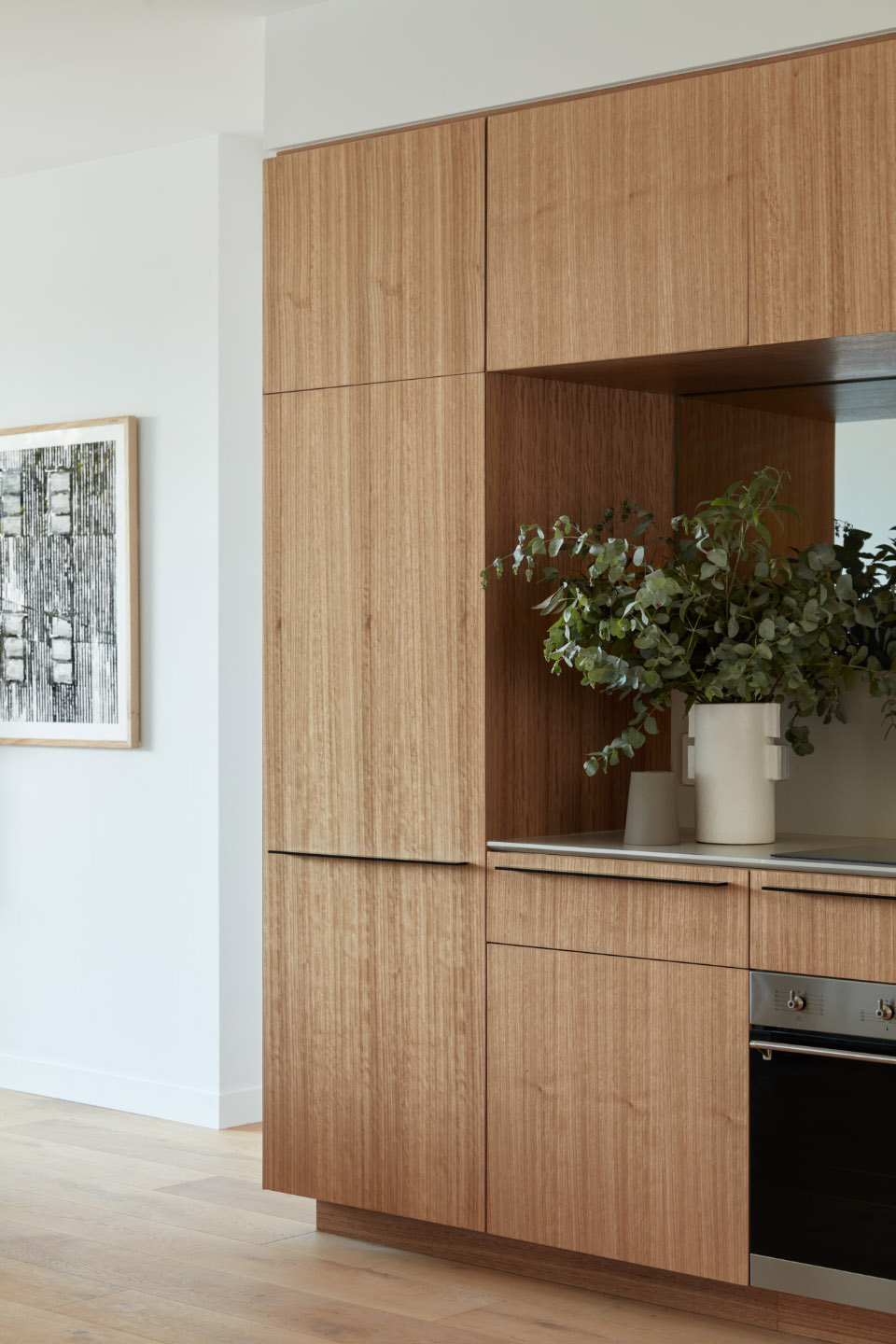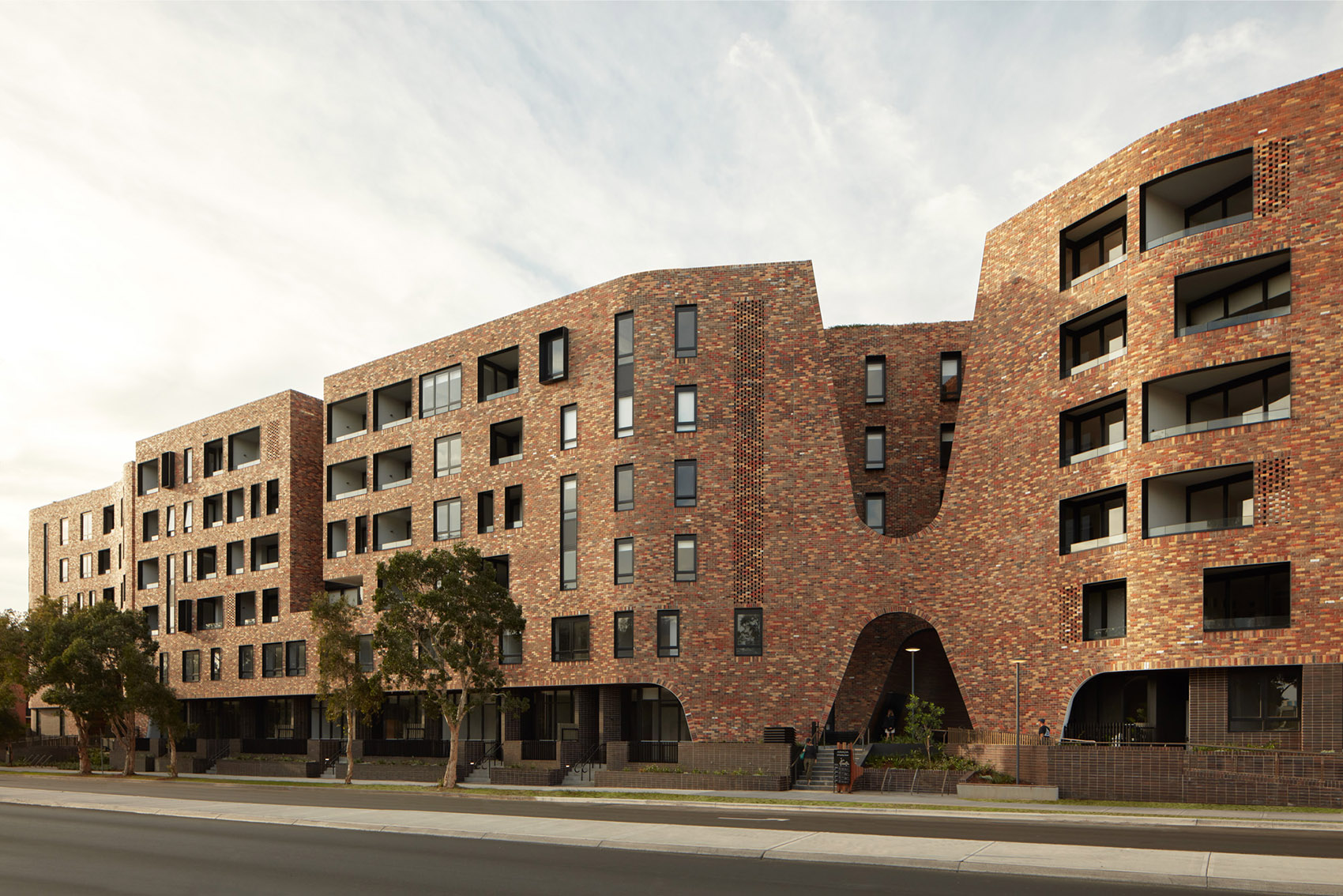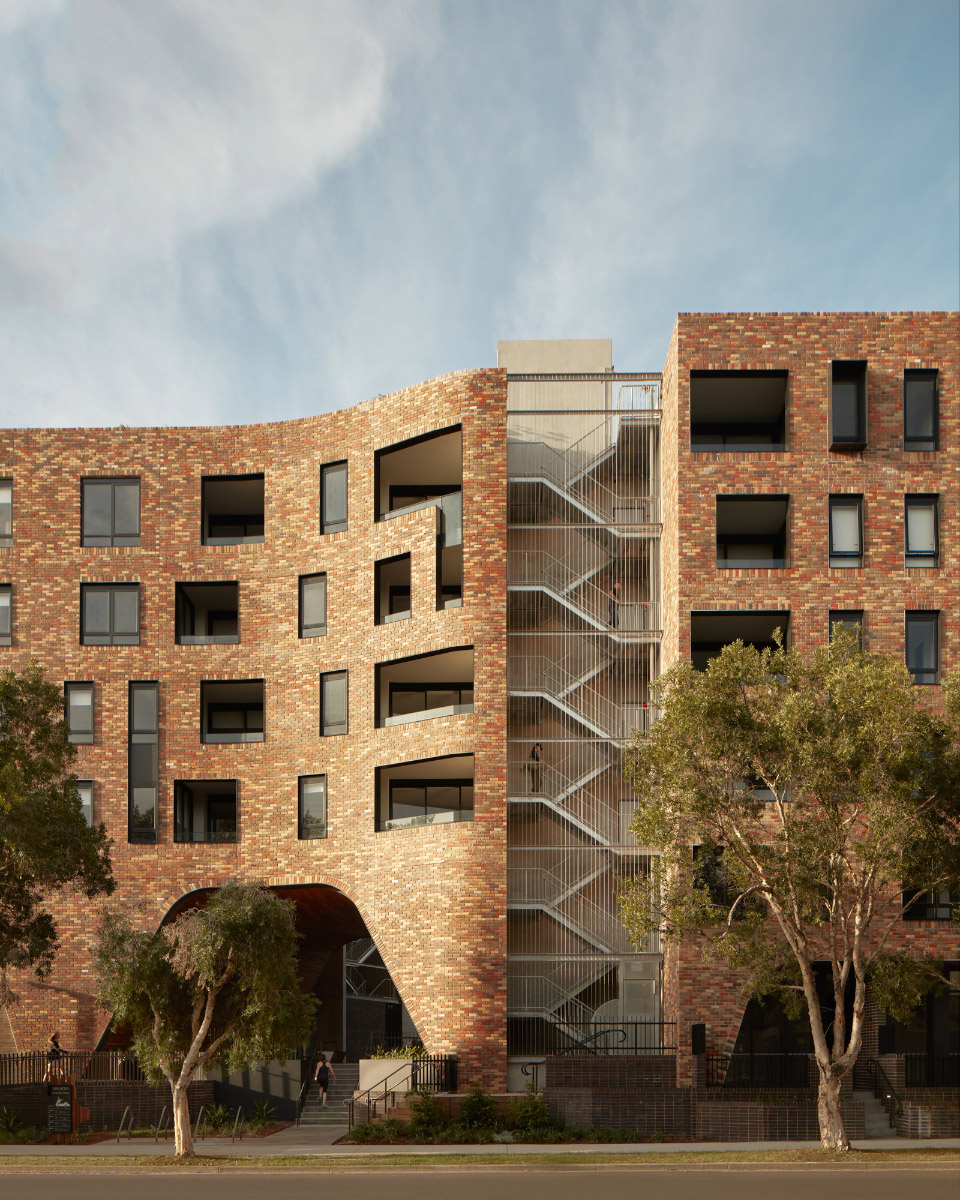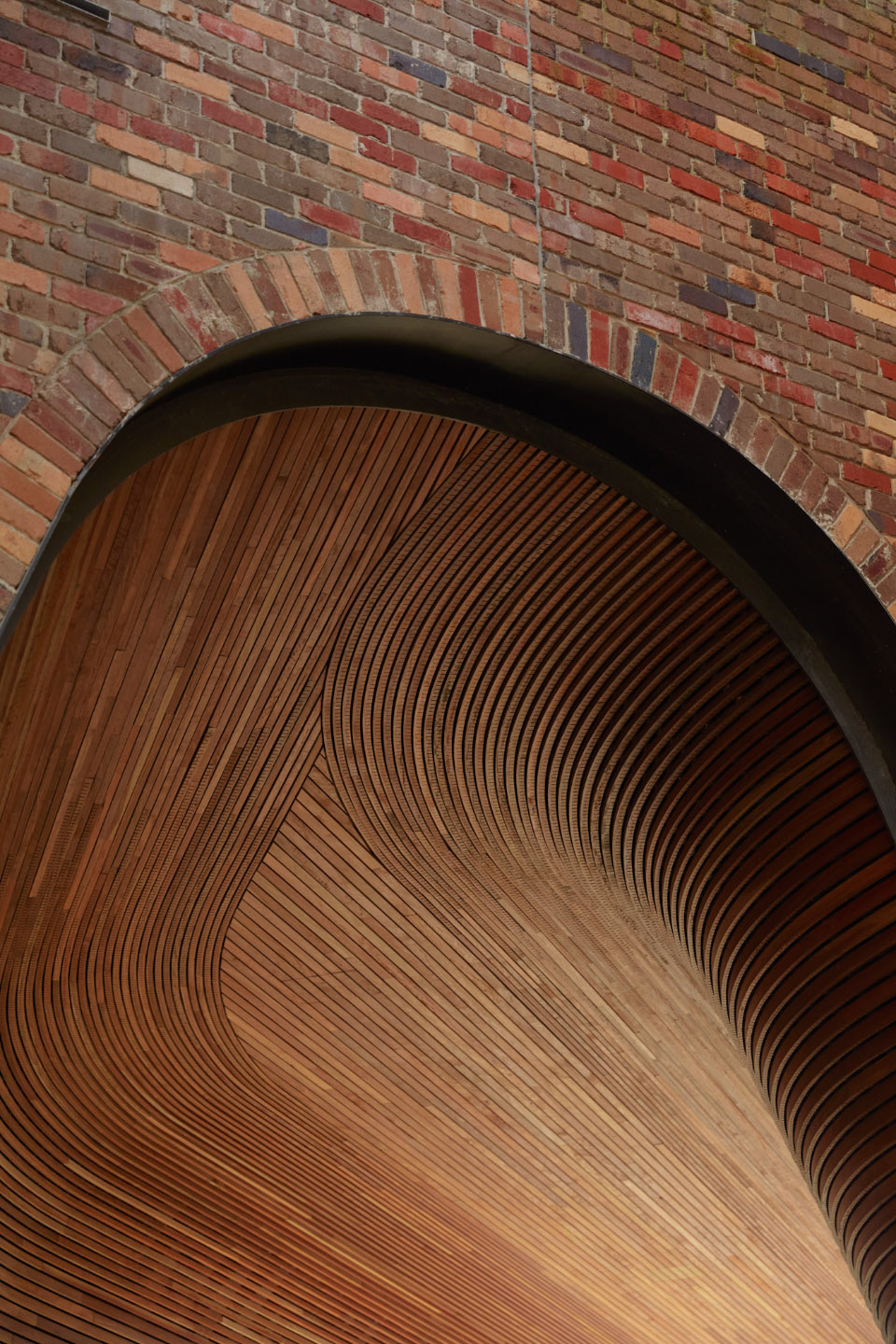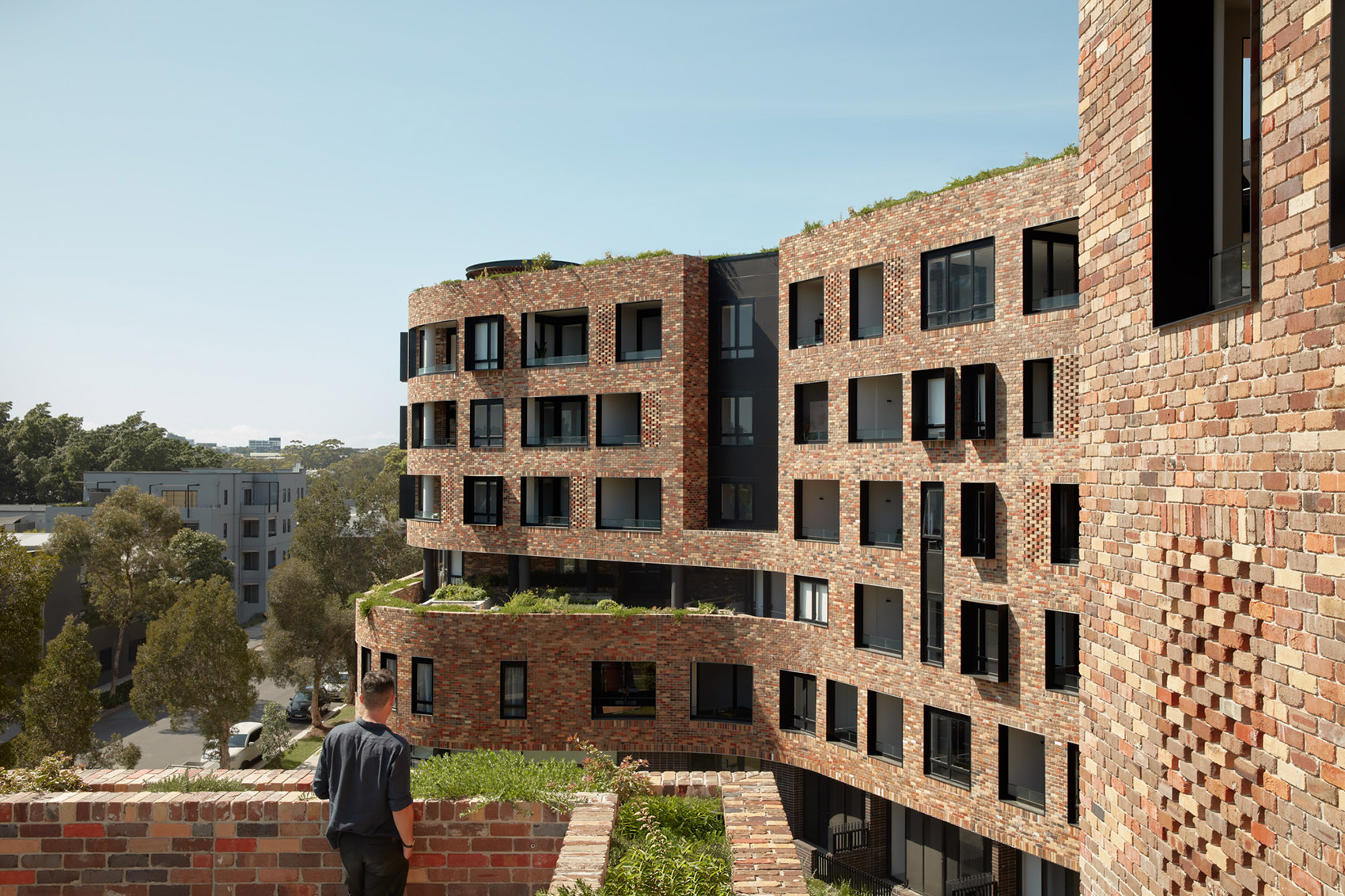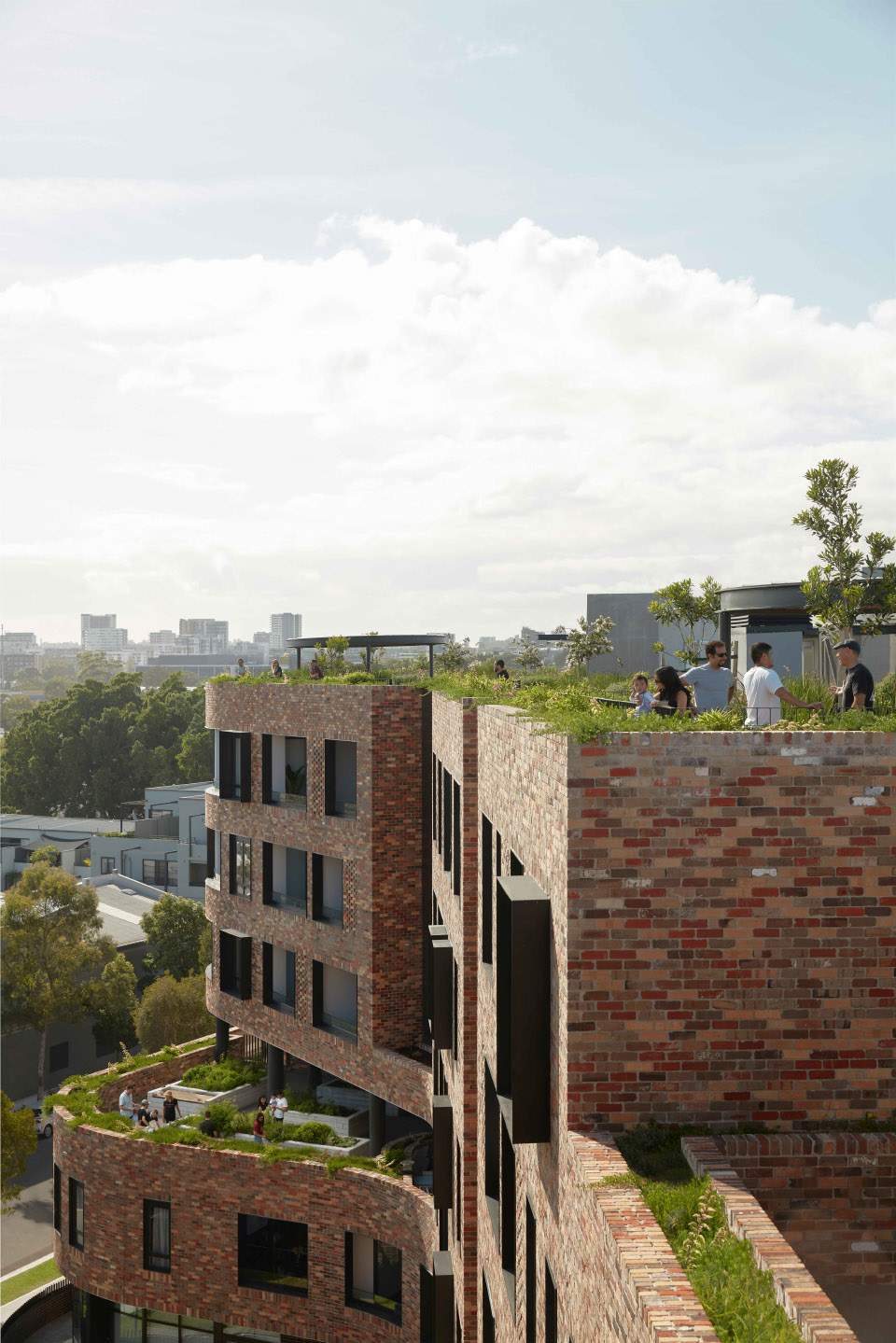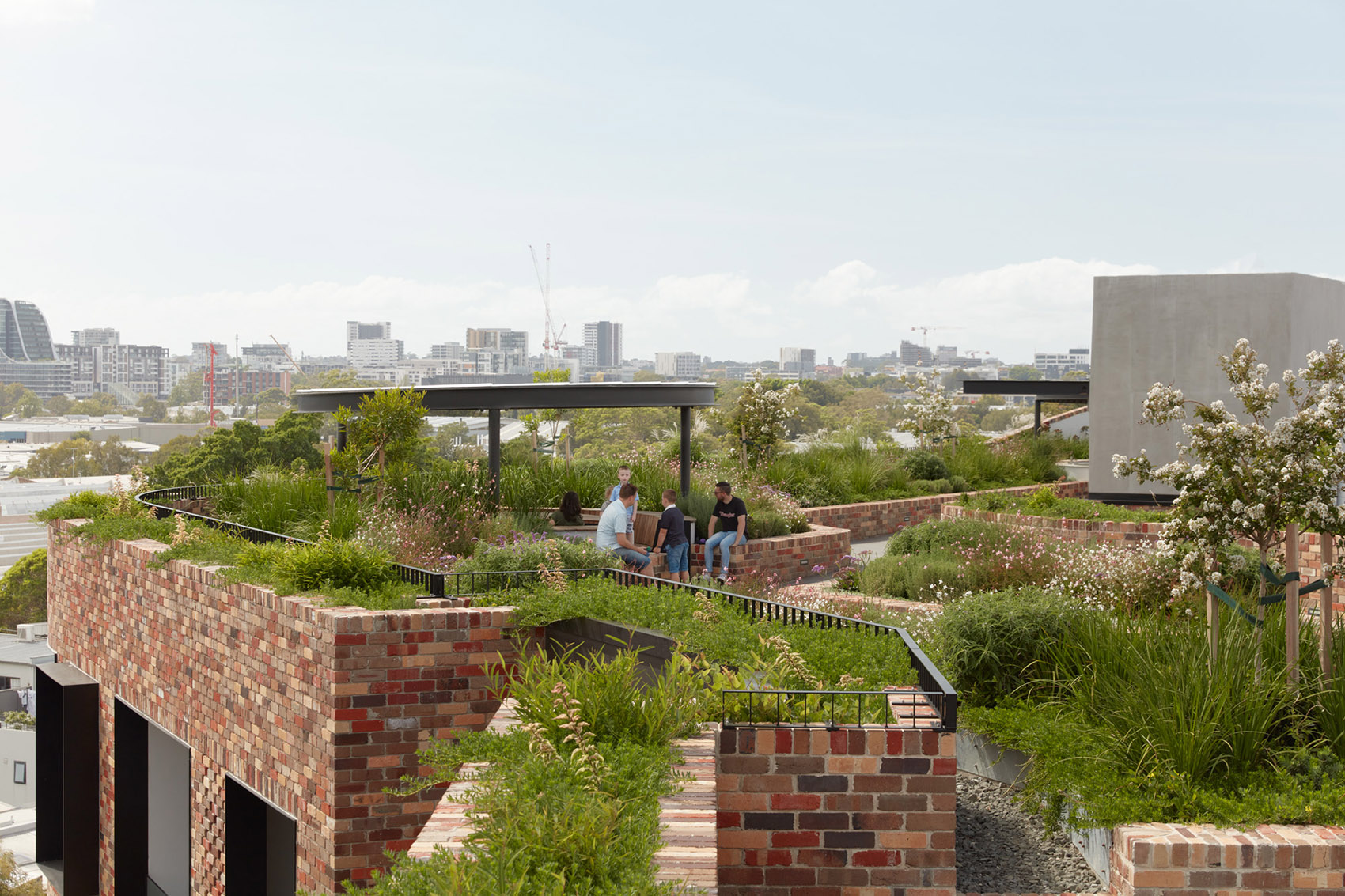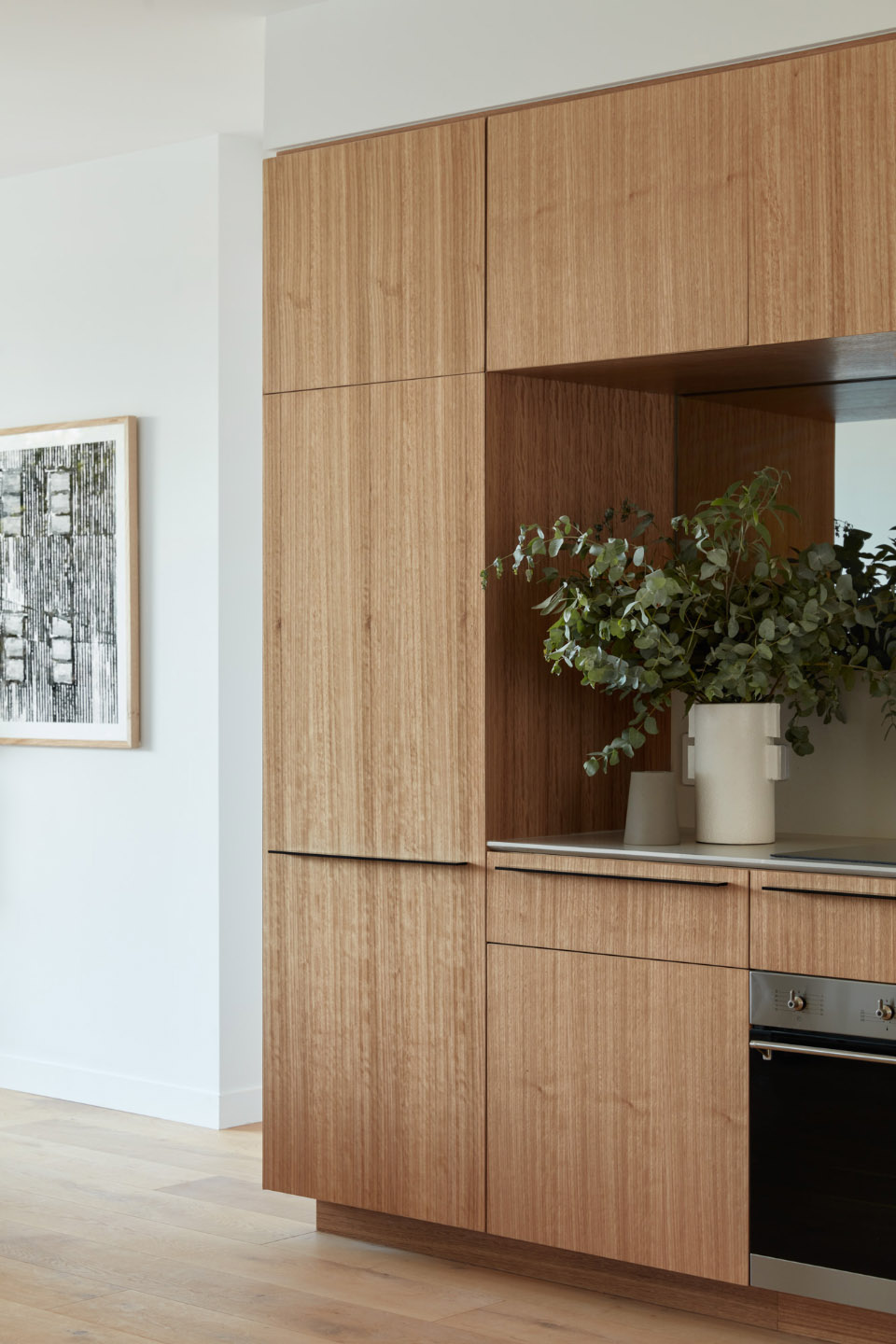该项目由建筑事务所Breathe Architecture、DKO Architecture和景观事务所Oculus合作设计。它关乎记忆与场所,核心是生态和社会的可持续性。它是澳大利亚第一座用近50万块再生砖建造的建筑,构成了零碳排放的表皮。建筑使用可再生材料和被动式太阳能技术,树立了低碳未来的目标。为了加强社区的联系,设计团队将Arkadia设计成4栋相连的建筑,它们拥有各自的核心筒且外形匀称。精细的再生砖构成的蜿蜒表皮将4栋建筑编织在一起。每栋建筑都有各自的公共空间、种植花园、电梯厅、地址和小型社区。澳大利亚国防住宅部DHA为国防人员及其家属提供优质住宅已有30多年,DHA希望Australia为住宅综合体建立新的基准,优先考虑环境和社会的可持续性。设计团队面临的挑战是设计152处住所,其中85户提供给国防人员及其家属,67户提供给新住户。为了实现这个目标,设计团队需要了解Alexandria街区的居民对郊区的热爱以及他们希望看到的住宅。设计团队通过民意调查,了解到居民对现有社区的期望和担忧,他们希望不受南侧车流噪音的干扰,以及空间更多地向北侧开放。Arkadia在南侧建了一堵防护墙,阻隔了悉尼公园路和繁忙的西联高速,并邀请社区居民共享北侧空间,将其作为日光公园使用,使住宅不受噪音和风的干扰。
▼项目外观,appearance © Tom Ross

Arkadia is a collaboration from Breathe Architecture, DKO Architecture and Oculus.At its heart Arkadia is about ecological sustainability and social sustainability. It’s about memory and place.Arkadia is the first building in the country to be built with nearly half a million recycled bricks, an almost entirely carbon-neutral skin. Arkadia uses recycled materials and passive solar-design technologies to stand as a beacon to a low carbon future.To strengthen community Arkadia is broken into 4 buildings, 4 cores, 4 right-sized, connected communities.The 4 communities are woven together by a single sinuous skin formed from carefully crafted recycled brickwork. Each building has its own space to come together, its own productive garden, its own lift lobby, its own address and its own community. Defence Housing Australia (DHA) has been providing quality homes for Defence families for over 30 years. DHA wanted Arkadia to set a new benchmark in multi-residential buildings. They wanted housing that prioritised environmental and social sustainability.The challenge was to design 152 places to call home, 85 homes for defence personnel and their families and 67 for new residents. To achieve this, we wanted to know what the residents of Alexandria loved about their suburb and what they wanted to see in the future. Through resident interviews, we heard the hopes and worries of the existing community. They wanted protection physically and acoustically from the busy traffic to the south, and more open space to the north. Arkadia forms a protective wall to Sydney Park Road and the busy WestConnex Interconnector to the south and invites the community to share its Northern face as a sunlit park protected from the noise and the wind.
▼建筑底层抬高1.2米,the ground floor levels are lifted 1.2m © Tom Ross
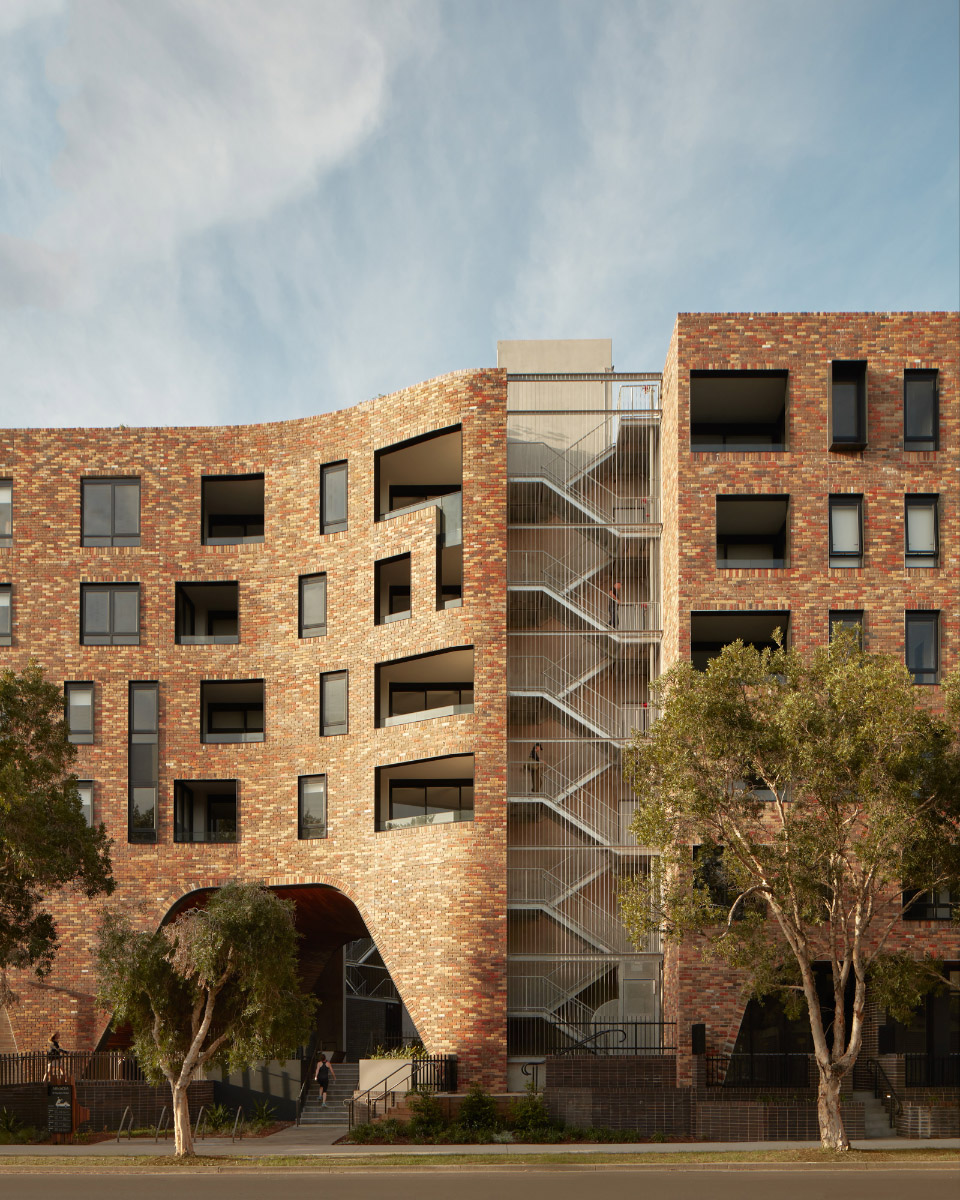
整个底层空间被激活,与周围街道产生互动。设计团队将建筑底层抬高1.2米,在入口、平台、生活空间和下面的街道之间建立了视觉联系,并提供踏步和座椅,居民偶遇时可以在这里停留。Arkadia并非混乱的社区,而是为居民创造邂逅和交流的机会。
The entire ground floor plan is activated and engages with the surrounding streets. The ground floor levels are lifted 1.2m to provide a visual connection between people’s entries, their decks, their living spaces and the streets below. This also provides steps and stoops for neighbours, and seating for chance meetings. Rather than a dislocated body of residents, Arkadia creates the opportunity for chance encounters and neighbourly connection.
▼丰富的平台空间,flatform space © Tom Ross
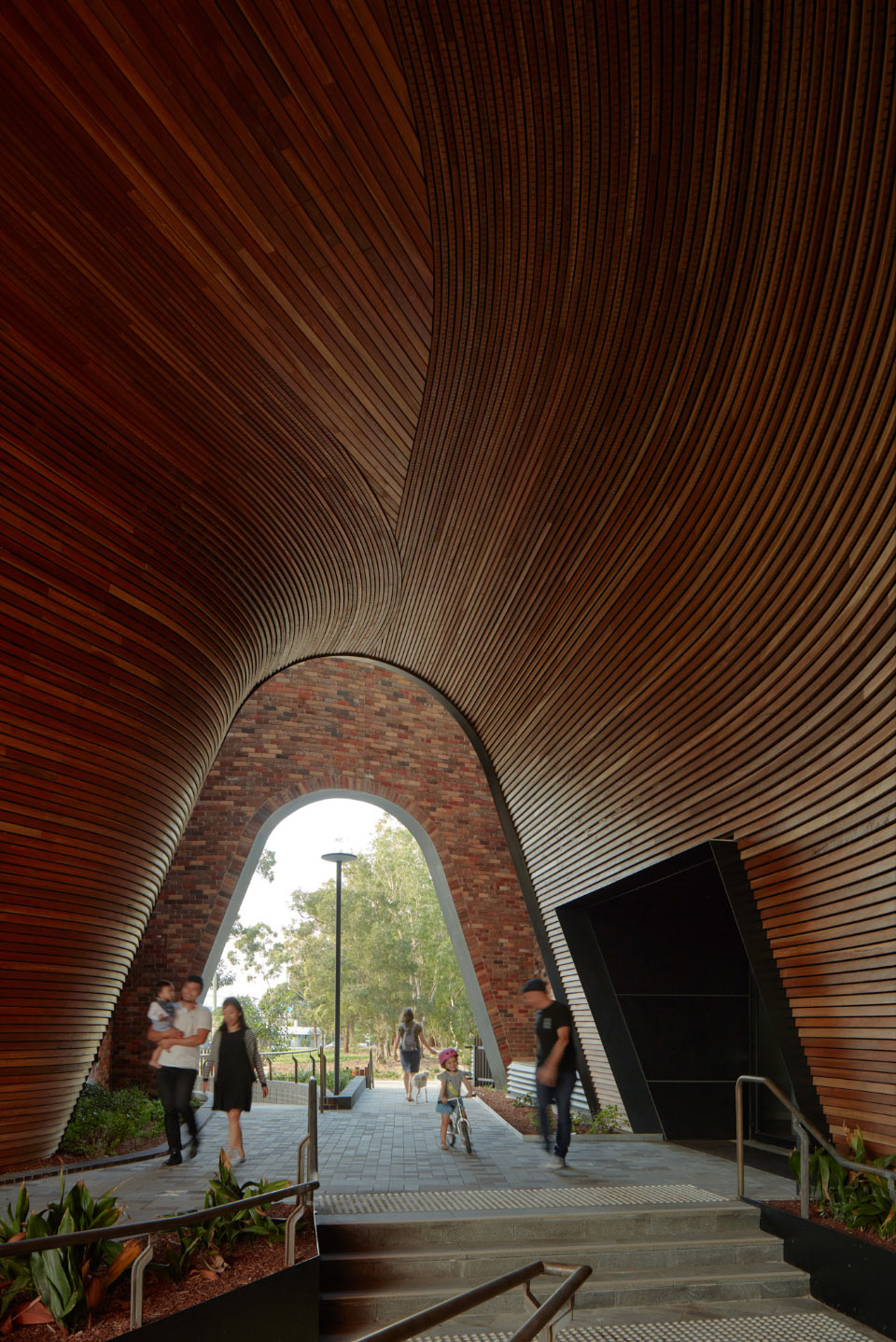
▼细节,details © Tom Ross
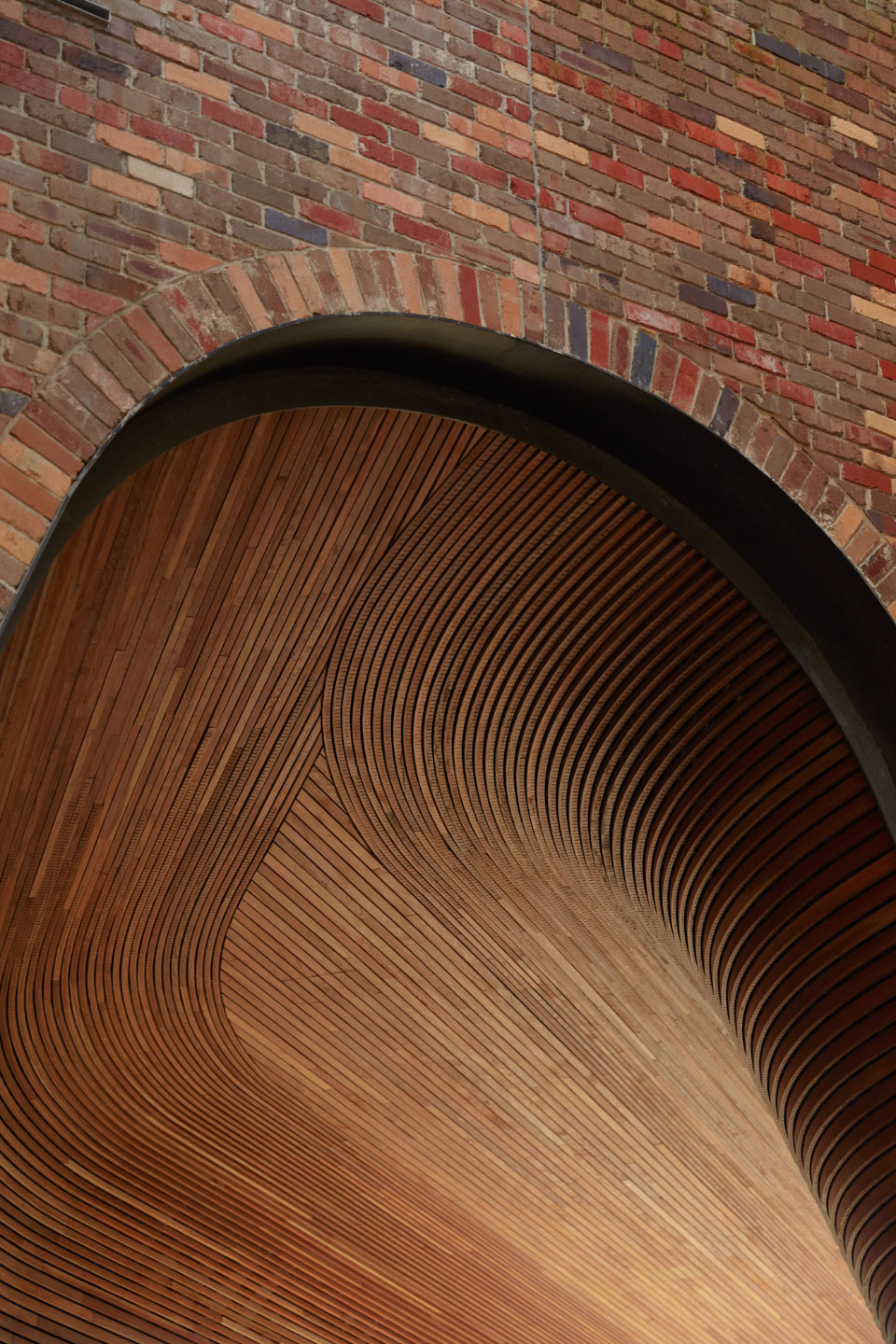
项目通过两种策略取得了卓越的可持续发展成果。其一是减少施工过程中的碳排放和能源消耗,包括在现场重新组装50万块再生砖,组成了零碳排的外围护结构。其二是减少建筑使用过程中的碳排放,通过在隔热性能良好的墙面设置尺寸合适的窗户,降低了冷热压的影响。并使用砖和钢形成窗檐,遮挡夏季阳光,引入冬季阳光。
Two key strategies were employed to deliver exceptional sustainability outcomes of Arkadia. The first is a reduction of carbon and embodied energy during construction; the building envelope itself is almost carbon neutral given its half a million recycled bricks were lovingly reassembled on site.The second is carbon reduction in the building’s operations.Heating and cooling loads are reduced through right-sized window openings in the well-insulated building fabric, and through use of the deep brick facade and steel, hoods to shade windows from the summer sun, but allow winter sun penetration.
▼围护结构由50万块再生砖组成,the building envelope is consist of half a million recycled bricks © Tom Ross
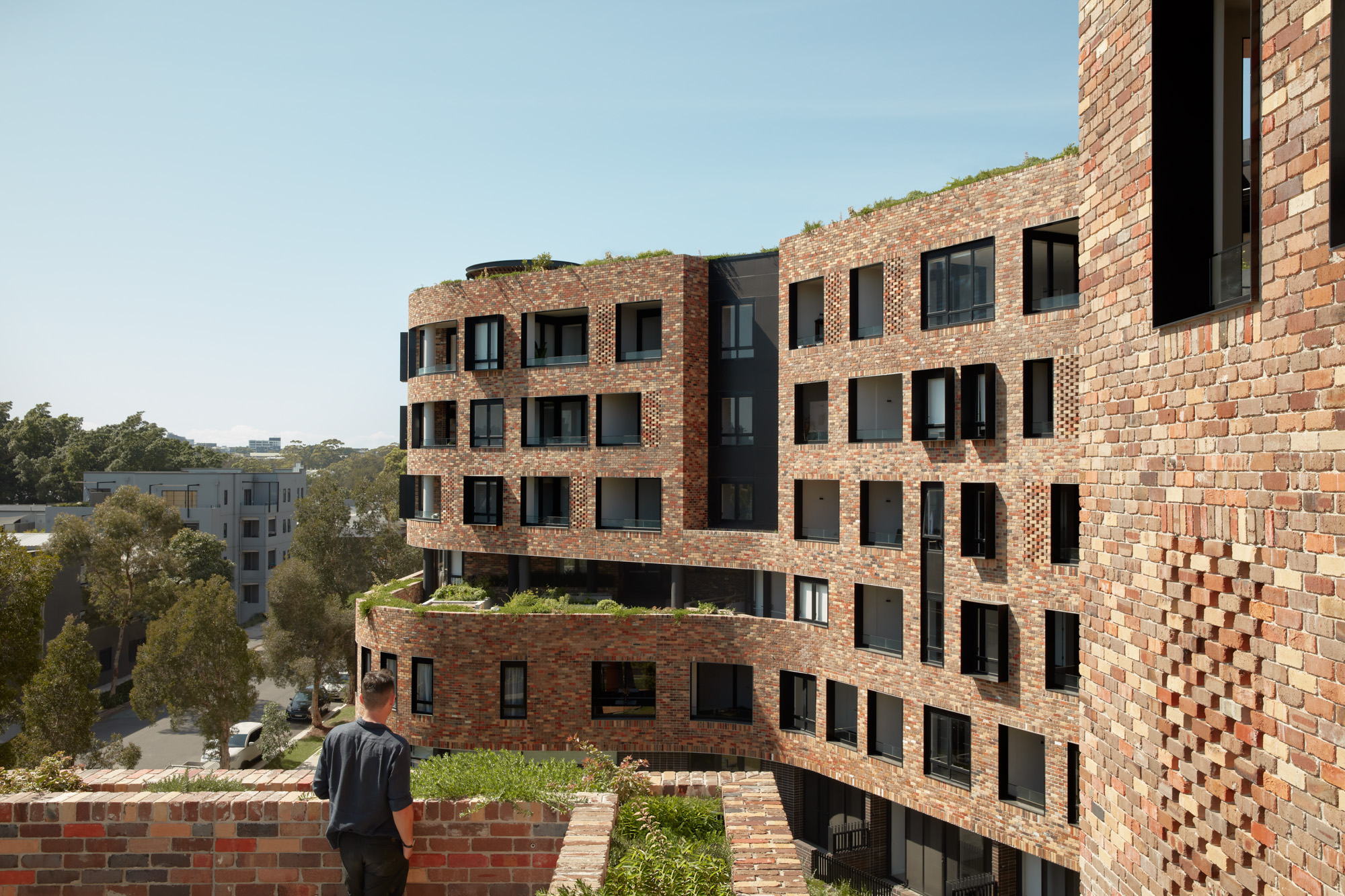
▼砖和钢形成窗檐,deep eaves of brick facade and steel © Tom Ross
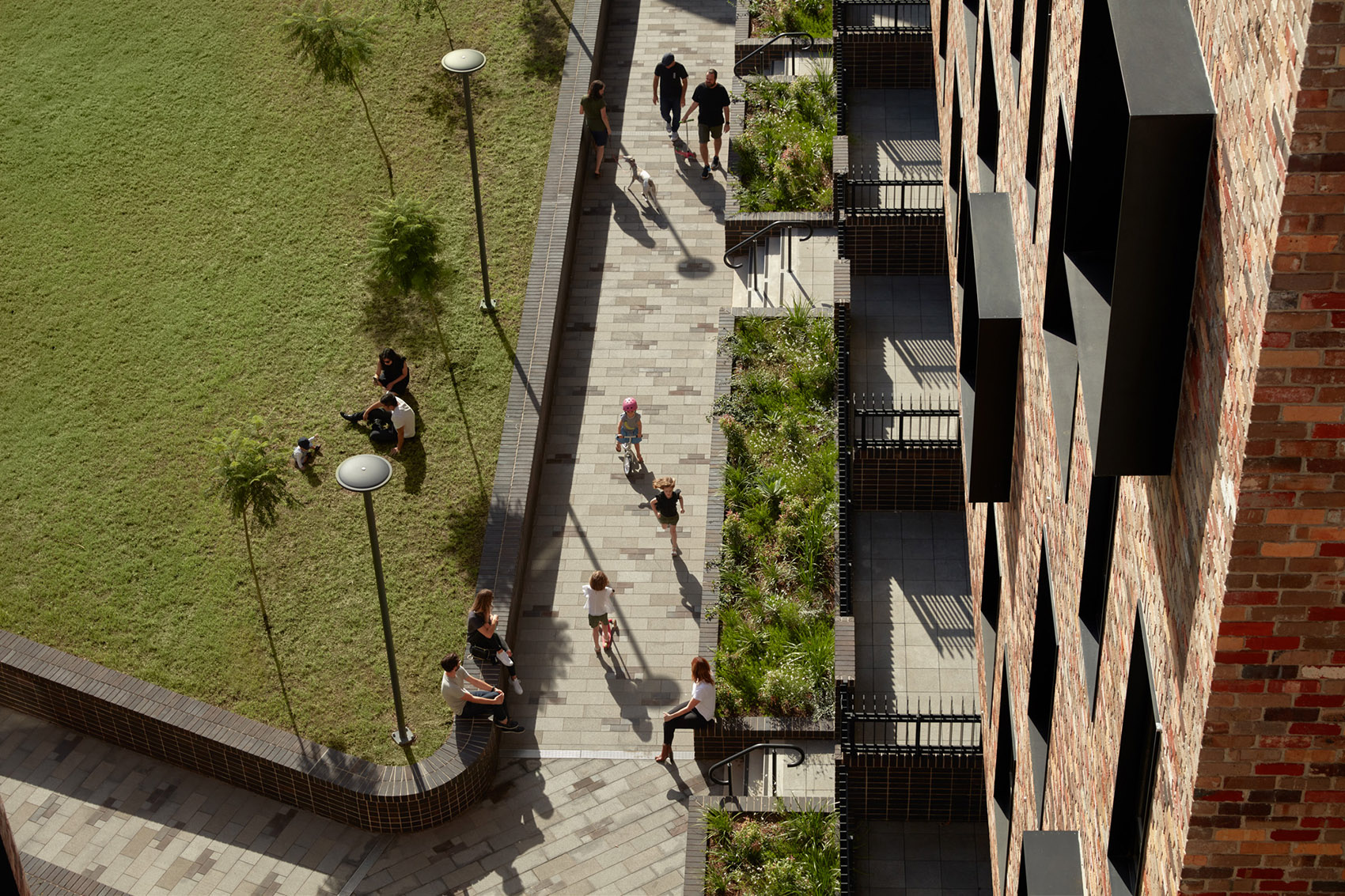
建筑屋顶通过铺设植被,在快速变暖的城市里给屋顶降温并限制了热岛效应。植被还可以逐渐生长并布满建筑立面,起到柔化外观和提升建筑热性能的作用。Arkadia久经不衰,如同被自然反噬而生机勃勃的废墟。
The buildings vegetation has been designed to cool the roof and limit the urban heat island effect in a rapidly warming city. It also serves to grow and occupy the facade, softening its appearance and further improving its thermal performance. Arkadia was built to last, resembling a ruin that nature has slowly reclaimed.
▼屋顶铺设植被,vegetation on the roof © Tom Ross
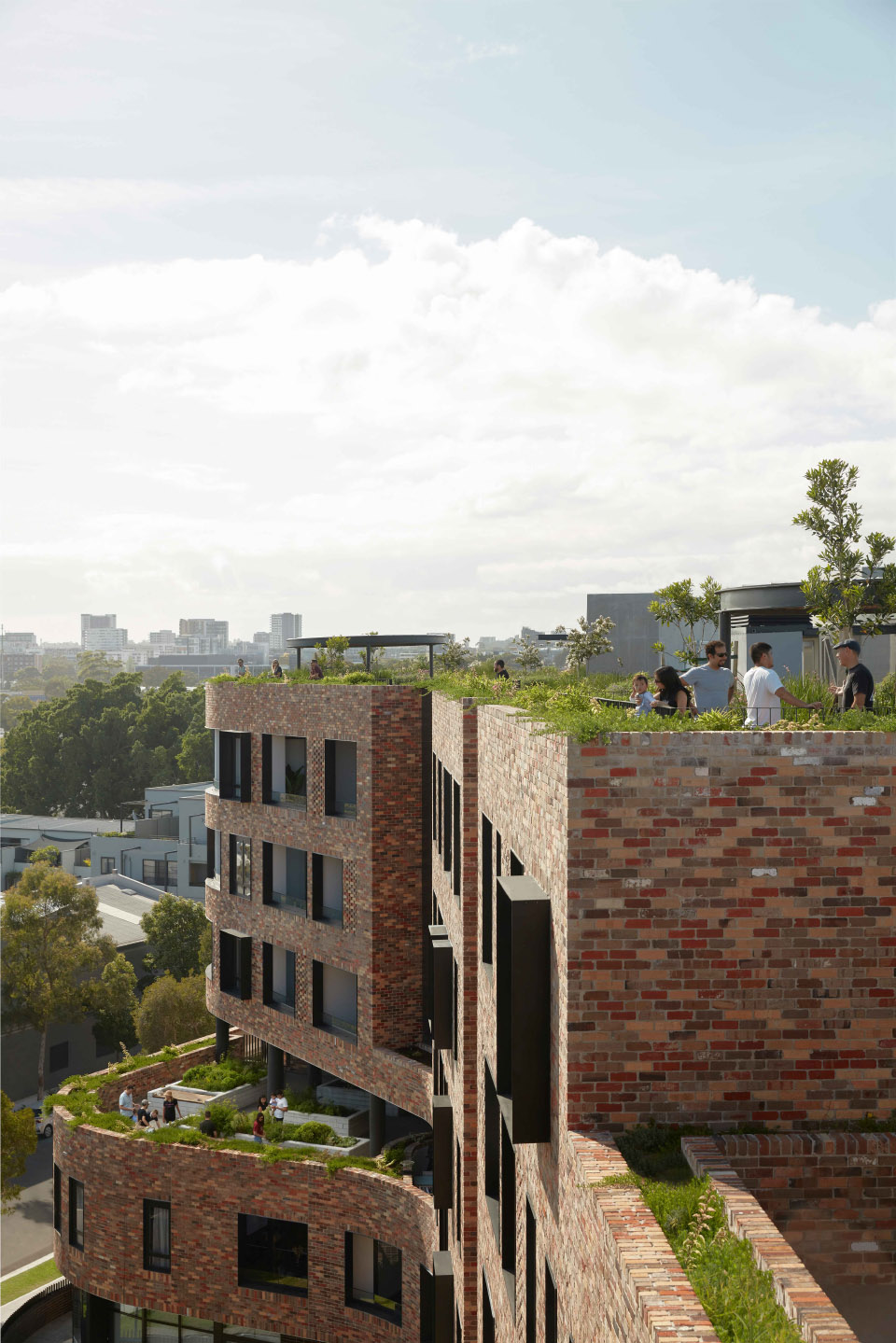
▼细节,details © Tom Ross
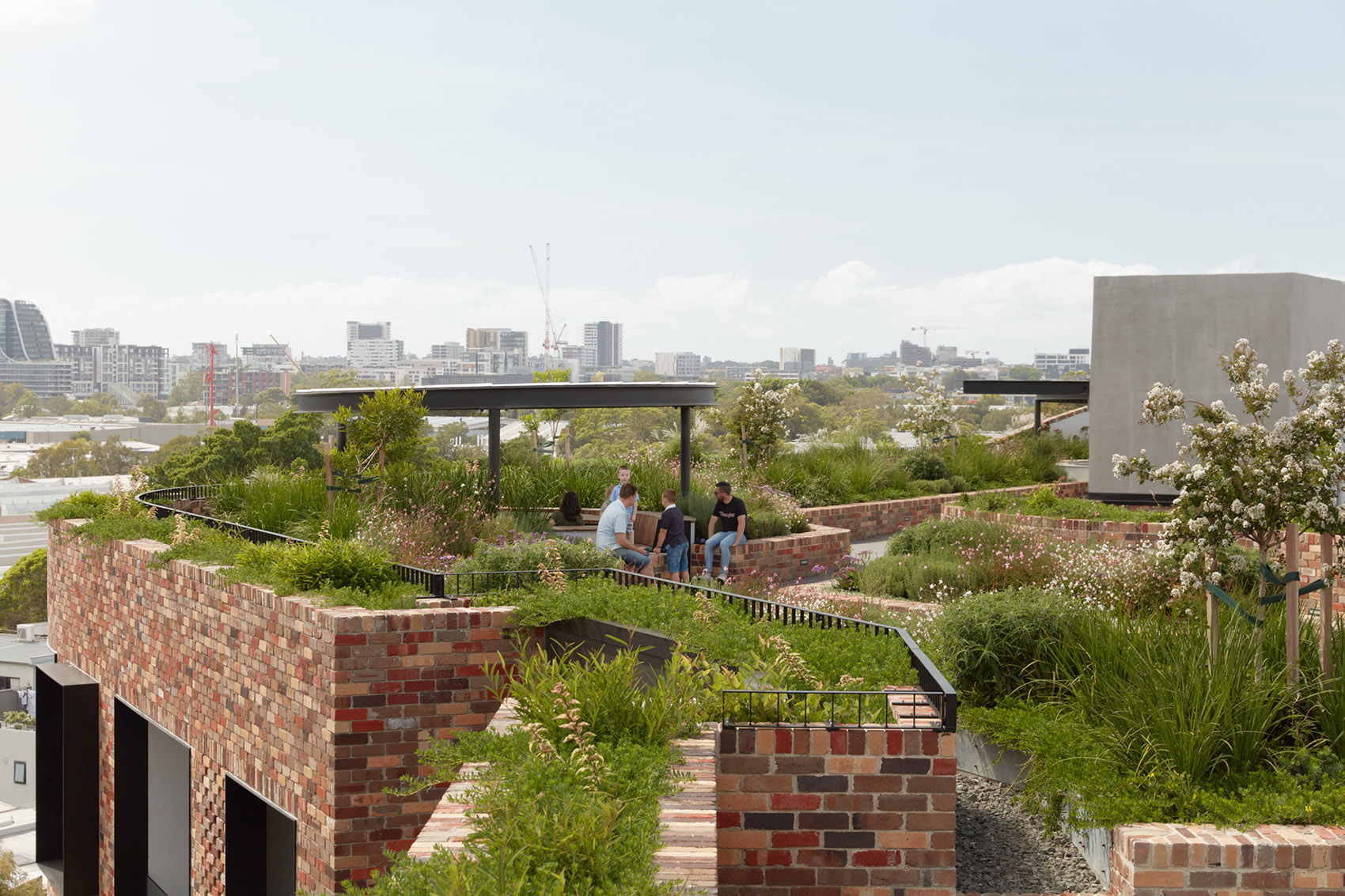
Arkadia不提供天然气,使用再生砖立面,回应过去、面向未来,象征了对社区、可持续性和联系的重视。大部分建筑材料拥有百年历史,可以持续使用数百年之久。
Importantly, there is no gas plumbed into Arkadia.Paying homage to the history of the site, the recycled brick facade talks to the future as a symbol of hope that values community, sustainability and connection. Arkadia is largely constructed of materials that are 100 years old and it has been built to last hundreds more.
▼公寓内部,interior of apartment © Tom Ross
